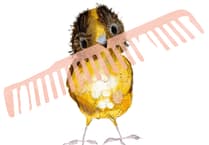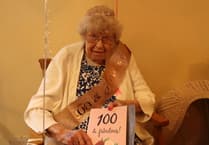GRAYSHOTT Second World War hero Jack Blanchard is now the worthy recipient of the highest military honour in France in addition to his Distinguished Flying Cross.
Appointing Jack a Chevalier of the Legion of Honour, the French Ambassador to London Jean-Pierre Jouyet wrote: “We owe our freedom and security to your dedication, because you were ready to risk your life.”
It was largely thanks to the successful missions flown in the final stages of the war by former Flight Lieutenant Blanchard and his brave colleagues of 166 Squadron, Bomber Command No 1 Group, that France was liberated in 1944.
Now a sprightly 97-year-old, Jack still recalls in vivid detail the 31 day and night raids he flew in his Lancaster heavy bomber for three months from May 1944.
A highlight of his tour of duty was 166 Squadron receiving a congratulatory telegram from Field Marshal Montgomery for a critically important attack on the German defences at Caen in Normandy that helped change the course of the war.
Also an accomplished artist, Jack’s pin-sharp memory and wartime photos helped him paint another daring mission, which was bombing the E-boat pens at Le Havre to prevent Germany sinking British shipping.
On June 6, 1944 – D-Day – he conducted a successful daylight operation bombing French rail junctions to prevent German reinforcements reaching the Normandy beaches.
“When I crossed the Channel I was flying fairly low and I was able to see all the invasion ships,” he recalled. “On that trip I was on my own, I didn’t see any other Lancasters.
“I didn’t see any German aircraft either. Flying in Bomber Command you needed luck. I was lucky and I survived. I was never frightened. I was just doing the job.
“I had six hours flying a Lancaster and then I was posted to 166 Squadron at Kirmington. I did a trip to Dortmund as an extra and a few cross-country flights during the day and night and then took my own crew out on my first mission.
“Nearly all our bombing raids were successful. We managed to evade German fighters and ack-ack guns.
“The lowest I was asked to fly was 100ft over the Channel. I saw a pall of smoke ahead and when I got back I discovered it was a pilot who had realised he was too low and then flew up into a Lancaster above him. His plane didn’t survive, but the other pilot managed to fly back.
“I once came back on three engines rather than four.”




